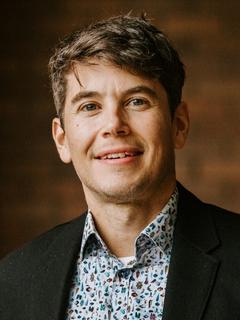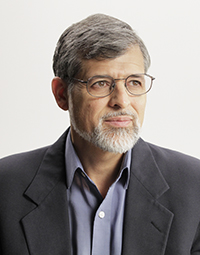
Date: Mon Jun 25, 2018
Time: 3:30 PM - 5:00 PM
Moderator: Thomas Morris
Precision Nitrogen Management: Past, Present and Future
R. Khosla, Y. Miao, E. Phillippi, and L. Longchamps.
Nitrogen is the primary limiting nutrient in agricultural production. Managing N fertilizer input has been a preeminent focus of scientists and farmers since at least the 19th century. Over the last 50 years researchers and growers have developed robust methodologies to model and manage N uptake by crops to feed the ever-growing global population. However, mis-management of N is common and has resulted in low N use efficiency and serious environmental problems. In order to address this challenge, it is necessary to examine the ways in which we have come to manage N fertilizer. This review will elucidate the history of modern N fertilizer management and examine the current and future directions of precision N management. Modern N fertilizer management began by using crop and soil based models to determine uniform rates of N fertilizer application. Researchers developed these optimization models with treatments that applied varying rates of N fertilizer that were then replicated across a field. Typically, soil and crop based models incorporate a yield goal estimate combined with an estimate of N present in the soil from sampling to determine the rate of N to be applied uniformly. However, these models do not account for the inherent spatial variability present in soil across a field or the variability of N uptake by the crop. This resulted in application rates that are not agronomically optimal and potentially damaging to the environment. More recently, methods and management techniques have been developed that better characterize the variability of N uptake by crops using sensing technologies. Soil and crop parameters are estimated non-destructively using leaf sensors, proximal active canopy sensors, low altitude unmanned aerial vehicle (UAV)-based remote sensing, aerial and satellite remote sensing technologies to diagnose crop N status and determine in-season N application rates. Even with the precise measurements and modelling capability that remote sensing offer, there is still significant and necessary room for improvement in global nitrogen use efficiency. The future of N fertilizer management will rely on site-specific modeling that incorporates both soil and crop models with remote sensing. In addition, genetic engineering may allow us to transform the rhizosphere microbiome and plant physiology in ways with profound impact on the bioavailability of plant available N for crops. Knowledge gaps and research needs will be discussed.
Keywords: Nitrogen use efficiency, Precision nitrogen management, crop sensing, crop growth modeling, sustainable development


The objective of this project was to evaluate the ability of the CERES-Maize crop growth model to simulate grain yield response to plant density and N rate for two soil types in Northeast China, with the long-term goal of using the model to identify the optimum plant density and N fertilizer rate forspecific site-years. Nitrogen experiments with six N rates, three plant densities and two soil types were conducted from 2015 to 2017 in Lishu county, Jilin Province in Northeast China. The CERES-Maize model was calibrated for 2015 and 2016, and evaluated for 2017 experiments. Results indicated that the model provided good estimations of yield across plant densities and N rates for the calibration years (R2=0.83 for black soil and R2=0.89 for sandy soil) and evaluation year (R2=0.91 for black soil and R2=0.95 for sandy soil), respectively. The calibrated model was then run using weather data from 1965 to 2017 for 15 different N rates, and 7 different plant densities to determine the optimum N rate and plant density for two soil types in different weather conditions. Model analysis indicated thatthe optimum plant density for black soil was 5.1-6.6, 7.3-9.2, and 8.3-8.4×104ha-1for dry, normal and wet years,respectively. For sandy soil, the optimum plant density was 3.0-3.9, 4.5-7.3, and 5.2-6.7 ×104ha-1for dry, normal and wet years respectively. For the optimum N rate, the value was 183-209, 231-239, and 220-228kg ha-1for dry, normal and wet years, respectively, for black soil. The optimum N rate was 171-186, 216-224, and 229-285kg ha-1for sandy soil for dry, normal and wet years, respectively. We concluded that the CERES-Maize model was able to simulate maize growth and yield, and could be used as atool to assist precision plant density and N management for different soil types and weather conditions in Northeast China

Nitrogen is often applied in excessive quantities, causing nitrogen losses. In recent years, the management of large quantities of manure and slurry compounds has become a challenge. The aim of this study was to assess the usefulness of the proxy tools Yara N-testerTMand RapidScan CS-45 for diagnosing the N nutritional status of wheat crops when farmyard manures were applied. Our second objective was to start designing a N fertilization strategy based on these measurements. To achieve these objectives, three annual field trials were established at three close locations with similar soils. Three kinds of initial fertilizers [dairy slurry (40 t ha-1), sheep manure (40 t ha-1) and conventional (no organic fertilizer on basal dressing and 40 kg N ha-1at tillering)] were added and five N mineral fertilization dose applied at stem elongation for each kind of initial fertilization. The proxy tools were used at stem elongation (GS-30) before applying the mineral N. Proxy tool readings look promising in order to adjust the N application rate at stem elongation. In dairy slurry, when both proxy tool values were 60 - 65 % the optimum N rate at stem elongation for achieving the maximum yield was 118 - 128 kg N ha-1. In dairy slurry and conventional treatments when readings were 85 - 90 % the optimum N rate was 100 - 110 kg N ha-1. However, at the sheep manure treatment, it is more difficult to find a relationship between sensor readings and yield. Moreover, when organic fertilizers were applied before sowing, the usual first N topdressing at the beginning of tillering could be avoided in years with humid spring.
The inefficient utilization of nitrogen (N) fertilizer due to leaching, volatilization and denitrification has resulted in environmental pollution in rain-fed maize production in Northeast China. Active canopy sensor-based in-season N application has been proven effective to meet maize N requirement in space and time. The objective of this research was to evaluate the feasibility of using active canopy sensor for guiding in in-season N fertilizer recommendation for rain-fed maize in Northeast China and determine if the plant height information could be used to further improve the accuracy of in-season N recommendation. Nitrogen response trials were conducted in four growing seasons with four planting densities. Split plot treatments included six N application rates (0, 60, 120, 180, 240, and 300 kg ha-1) at each year-density with three replications. One third of the N was applied as basal fertilizer, and the rest as side-dressing at V8-V9 stage of spring maize. The GreenSeeker active canopy sensor was used at the 8-9 leaf growth stage (V8–V9) to collect the vegetation index (NDVI), which was used with the N fertilizer optimum algorithm (NFOA) to calculate in-season N fertilizer side-dressing rates. Plant height and yield were obtained at V8–V9 and harvest stage respectively. The results showed that both NDVI and NDVI*Height could predict the yield potential accurately. The NFOA recommended higher side-dressing N rates using NDVI*Height than NDVI. The average total N rate based on NDVI*Height-NFOA recommendation was closer to economically optimum N rate than based on NDVI-NFOA. It is concluded that using plant height information together with GreenSeeker NDVI can improve the accuracy in N recommendations for rain-fed maize in Northeast China than only using NDVI.

Nitrogen and water continue to be the most limiting factors for profitable maize production in the western Great Plains. The objective of this research was to determine the most productive and efficient nitrogen and water management strategies for irrigated maize. This study was conducted in 2016 at Colorado State University’s Agricultural Research Development and Educational Center, in Fort Collins, Colorado. The experiment included a completely randomized block design with five treatments per block. The treatment strips were planted across the entire length of the field in the East to West direction such that the treatment strips traversed over each management zone (low, medium, and high zones). Five N rates of 0, 56, 112, 168, 224 kg ha-1 using 32% Urea Ammonium Nitrate were applied at the V8 crop growth stage. Three rates of irrigation applied at 80, 100, and 120 % of evapo-transpiration were applied throughout the crop growing season by employing weather and soil data that is readily available online, to model crop ET and plant available water in the soil. A significant (P<0.1) and positive grain yield response to increasing levels of N across all site-specific management zones was observed. Likewise, a significant effect of irrigation (P<0.1) was observed across the field and within zones. The four nitrogen management strategies evaluated in this study did have a significant effect on the mean grain yield and nitrogen use efficiency (P<0.1).

Nitrate-N from agricultural fields is a source of pollution to fresh and marine waters via subsurface tile drainage. Sensor-based technologies that allow for in-season monitoring of crop nitrogen requirements may represent a way to reduce nitrate-N loadings to surface waters by allowing for fertilizer application on a more precise spatial and temporal resolution. However, little research has been done to determine its effectiveness in reducing nitrate-N losses. In this study, the field scale hydrologic and nitrogen simulation model Drainmod-NII was used to estimate nitrate-N loads for different fertilizer application rates and timings to corn for a field site in Waseca, Minnesota. The results of the simulation, along with results from two other locations in southern Minnesota (Lamberton and Willmar) were used in a regression analysis to develop equations that predict nitrate-N load for the region as a function of climate and fertilizer timing and application rate in southern Minnesota. Fertilizer timing treatments used in model simulation included fall, spring, and variable rate nitrogen (VRN) applications, where the VRN application involved half of the fertilizer applied before planting and the remaining half at approximately corn V6 growth stage. Drainmod results showed the highest nitrate loads occurred for all fall application rates, followed by spring, with VRN having the lowest nitrate loads. An exponential regression model which used fertilizer application rate and growing season precipitation as the dependent variables showed good agreement with Drainmod results, with R2 of 0.46, 0.49, 0.52 for spring, split-VRN, and fall application timing respectively. The regression model showed that the variation in nitrate-N load between the timing treatments was highly related to annual precipitation and fertilizer application rates. For a growing season precipitation of 60 cm, the “best-case” scenario of split-VRN, applied at a rate of 100 kg N/ha results in 14 kg N/ha less nitrate lost than the “worst-case” scenario of fall application at a rate of 180 kg N/ha (a 58% reduction). At 100 cm of precipitation, the “best-case” split-VRN, low rate application results in 67 kg N/ha less field nitrate losses compared to the “worst-case” fall, high rate application (59% reduction).

